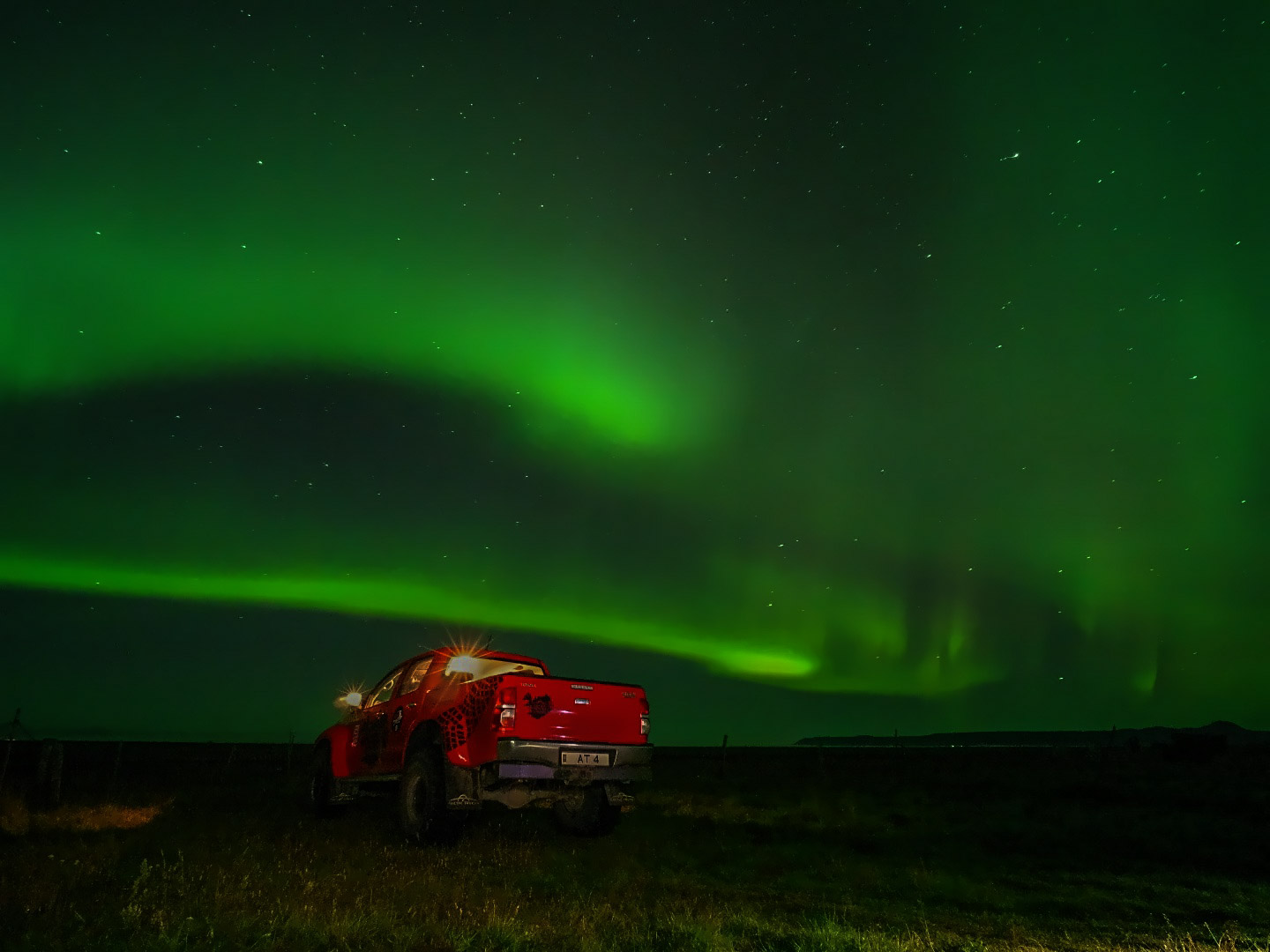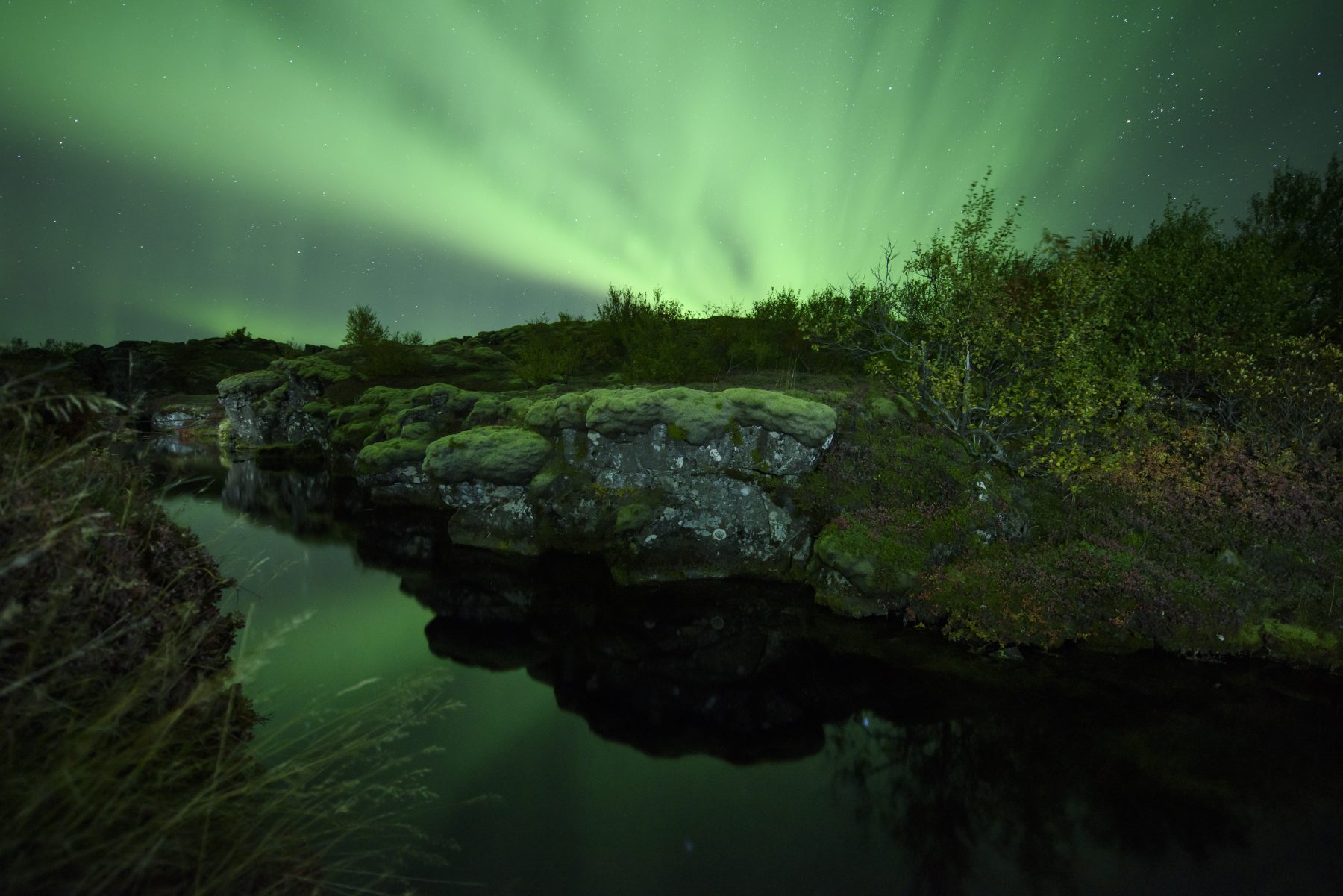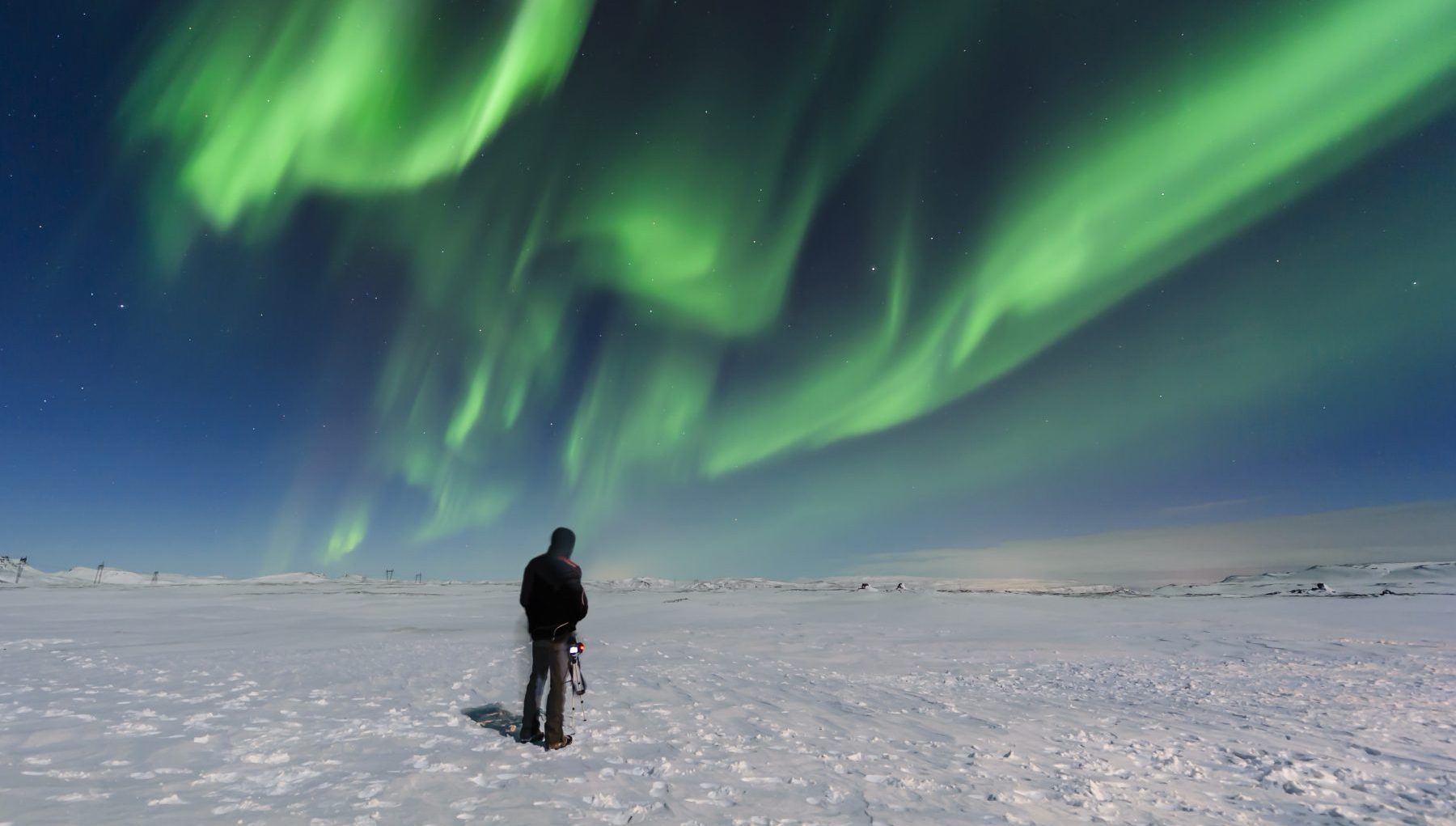The beautiful northern lights are coming out! The fantastic northern lights season is from late August to late March, and you can get a chance of seeing the mesmerising lights with your own eyes. Join us on a northern lights tour between 25th of August and 31st of March every year!
Northern Lights Search
Come with us on a guided Northern Lights Hunt and go to the best spot available to see the lights! The tour is a self-drive tour with a guide, but since we will be driving an Arctic Truck, we can drive on mountain roads and get away from the hustle and bustle and away from another traffic. This tour gives the ultimate experience – complete darkness, out in the Icelandic wilderness. The small intimate tour makes it a journey that you will never forget! If you prefer more action and multi-day adventures then check the Landmannalaugar & Northern Light Hunt out.

What are the northern lights?
The northern lights, which are a wholly natural phenomenon, are formed by charged solar particles hitting the Earth’s atmosphere after solar storms. So, the Sun affects the Earth not just during the day by giving everything life, but also during the night. However, because it is a natural phenomenon, we cannot guarantee that you will see them. If we could, we would be rich!
Does it have to be freezing for the northern lights to be visible?
No, that is not true. Many believe that the temperature needs to be below 0°C for people to see the northern lights. The reason for this belief is that the skies need to be (mostly) clear of clouds and dark for us to be able to see them. There is only darkness during the winter months in Iceland, and it is generally a bit colder when the skies are clear, so it is not that unreasonable people would believe this.
That also does not mean that there are no northern lights during the summer months, we just cannot see them because it is so bright! However, when it gets dark enough for us to see the stars in the sky, it is dark enough to see the northern lights!

What colours are the lights?
They can range from different shades of green, blue, purple, red and pink. They can even sometimes seem white! The colour depends on different particles colliding with the Earth’s atmosphere, where they land and how high or low in the atmosphere they are.
The lights also differ in intensity, depending on how strong and big the solar storms are.
